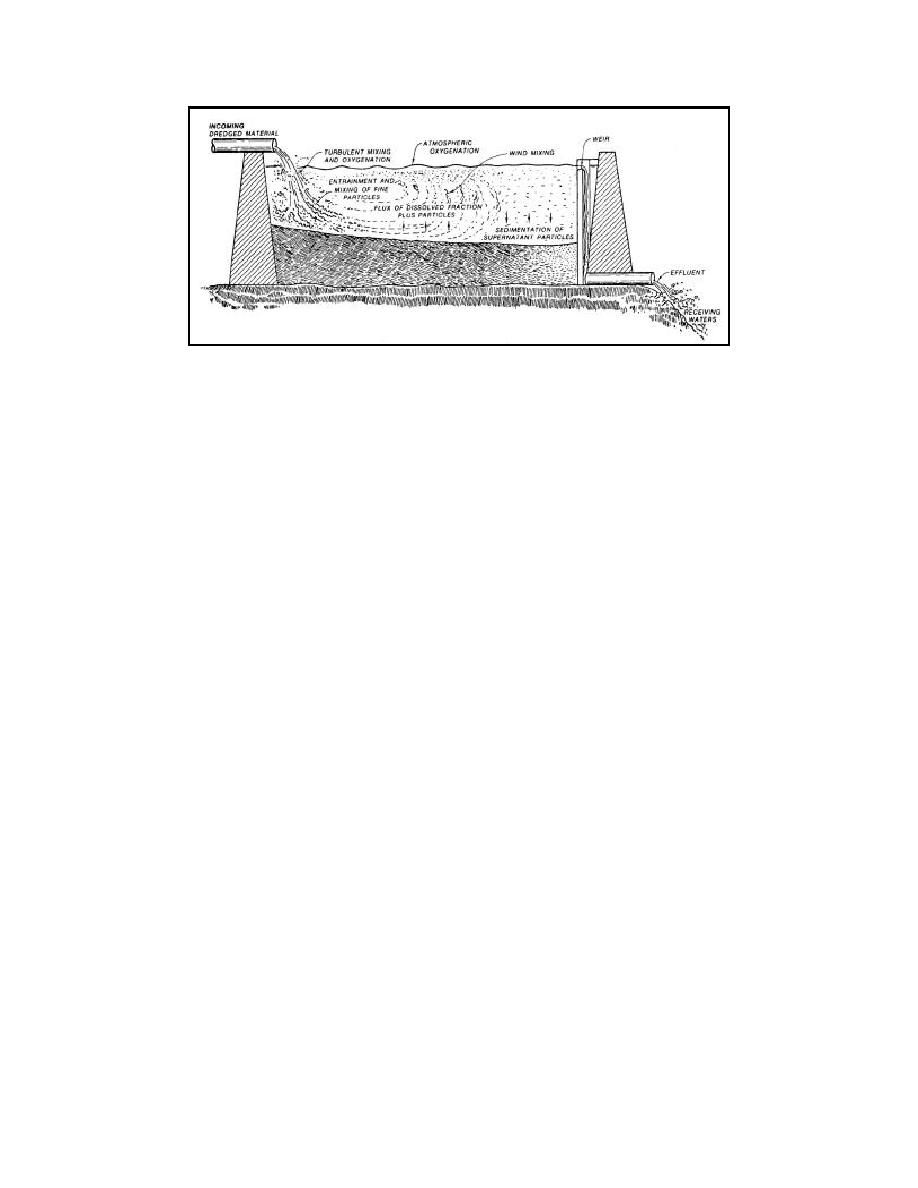 |
||
|
|
||
| |||||||||||||||
|
|
 Figure 4-1. Schematic of supernatant water interaction in an active confined
disposal facility affecting effluent quality
CDFs are typically designed to retain virtually all the solid fraction of dredged
material. However, all solids cannot be retained during the disposal process, and
associated contaminants are transported in dissolved form and with the particles in
the effluent. The only solids in the effluent are typically very fine-grained and are
widely dispersed so that any accumulation on the bottom of the receiving water
body is negligible. Therefore, effluent typically has the potential for water
column effects only, and evaluation of benthic effects related to effluent is usually
not appropriate.
The duration of effluent discharges will roughly correspond to the time
required to complete the dredging operation and may vary from days to months.
Effluent discharges may occur from a few hours per day up to 24 hours per day,
depending on project conditions.
It is important to distinguish intentional release of ponded water during filling
and subsequent management of the CDF from runoff released from the CDF
following precipitation. Precipitation runoff is another contaminant pathway and
will require separate evaluation if there is a reason to believe that contaminants
might be released (Chapter 5).
4.1.2 Method of Filling
The techniques for evaluation of effluent discharges described here are
specifically designed for the case of hydraulic disposal of material into CDFs with
the effluent discharge to receiving waters occurring from an outlet pipe or weir
structure or structures. Hydraulic disposal can be in the form of direct pipeline
inflow from cutterhead or similar hydraulic suction dredges, intermittent hydraulic
placement from hopper dredge pumpout operations, or intermittent hydraulic
placement by reslurrying material from barges (which may have been filled by
mechanical dredges). Such disposal operations would normally have an effluent
discharge flowrate roughly equal to that of the inflow.
Some CDFs may be designed to allow flow of effluent water through filter
cells or permeable dike sections. The techniques described here may be applied to
4-2
Chapter 4
Effluent During Disposal Operations
|
|
Privacy Statement - Press Release - Copyright Information. - Contact Us - Support Integrated Publishing |